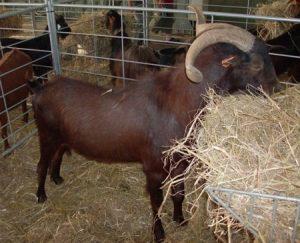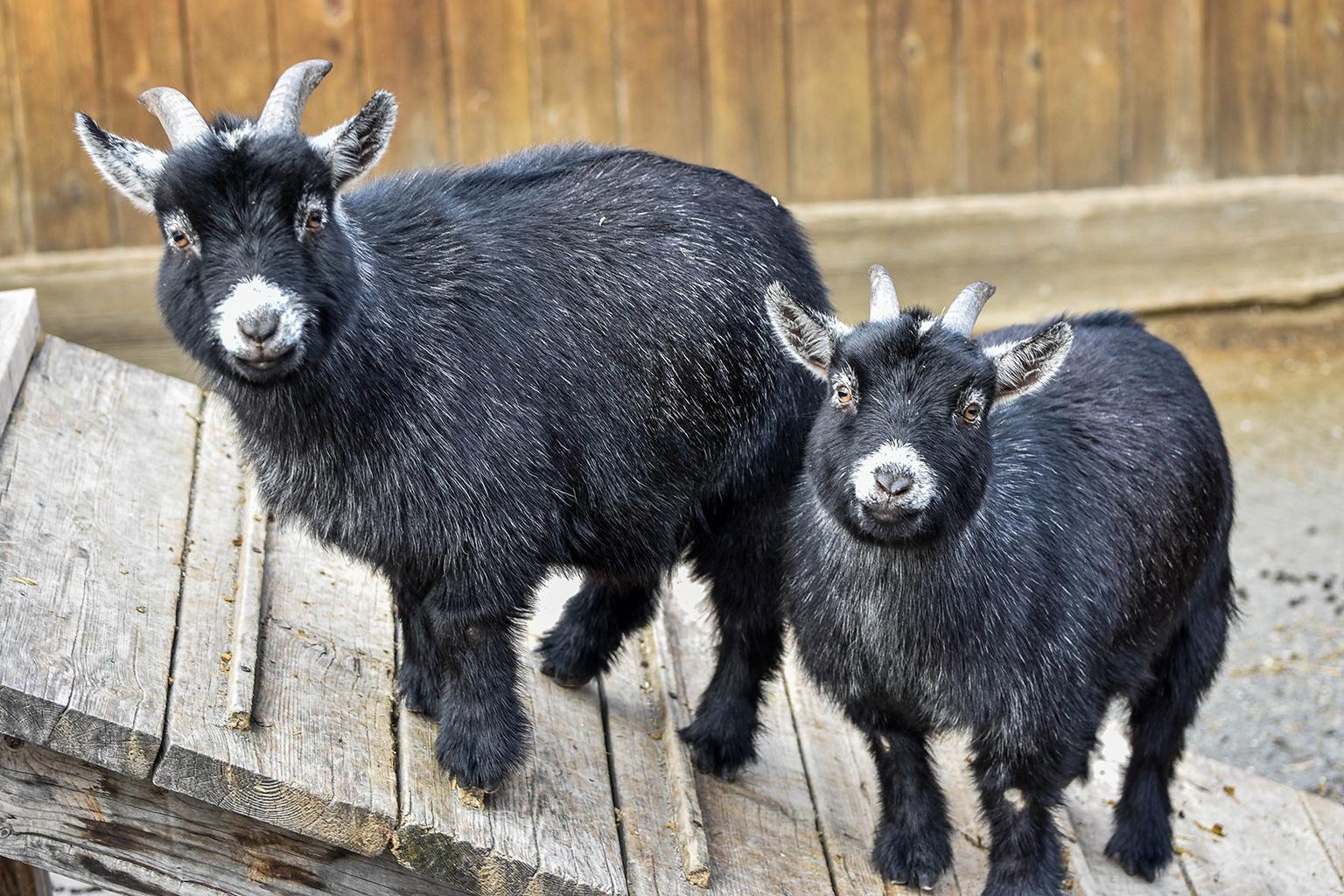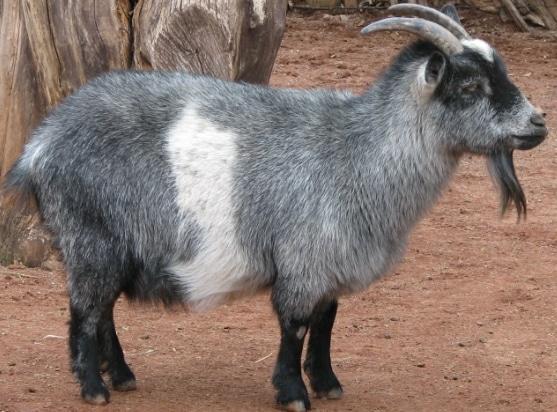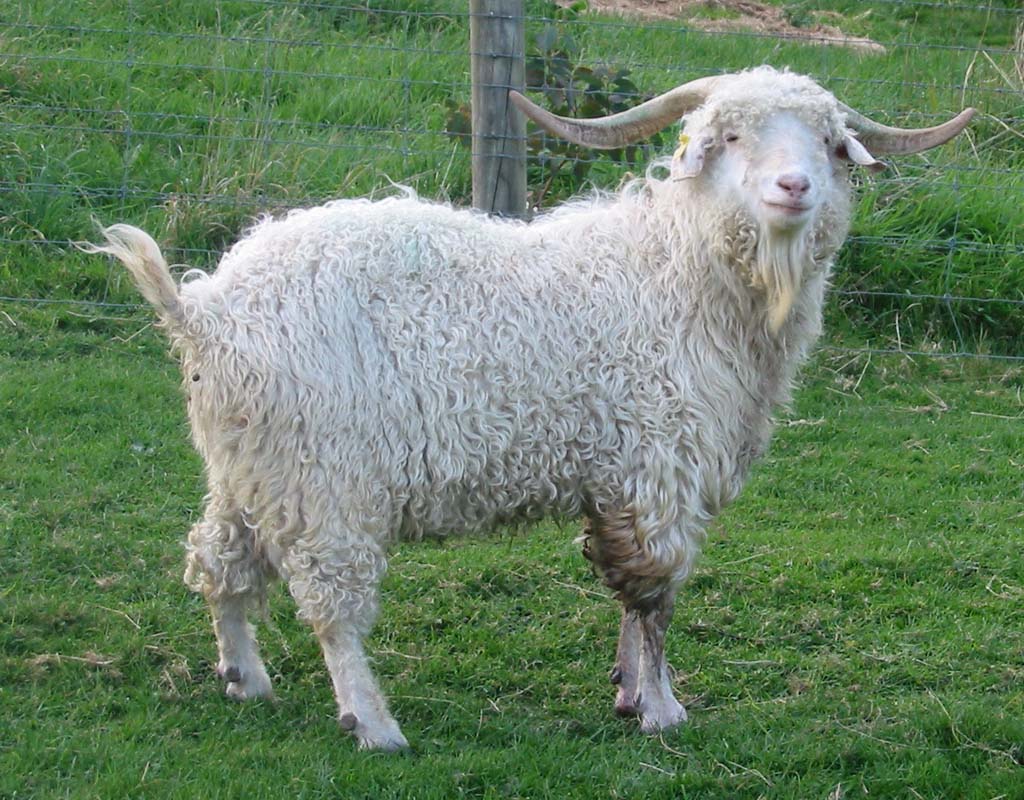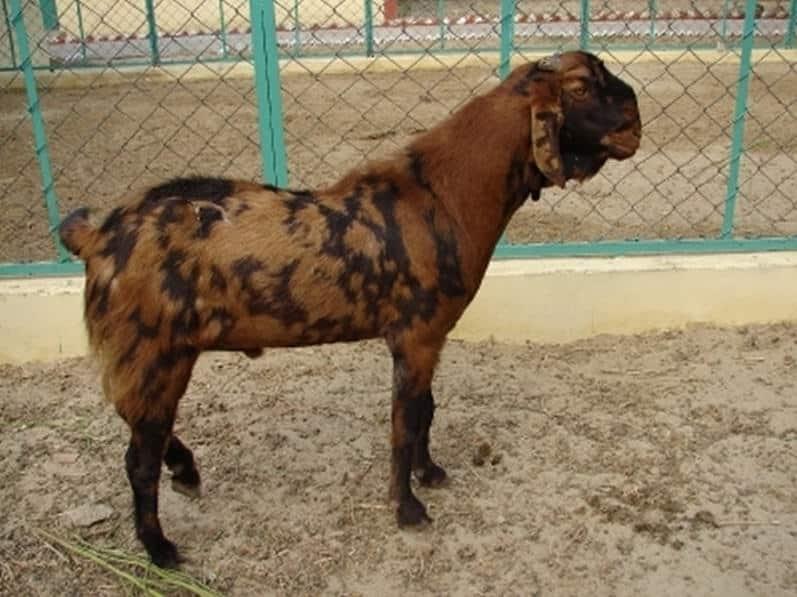Charnequeira Goat
The Charnequeira Goat is an ancient breed of domesticated Portuguese goats. They are primarily red-colored, dual-purpose goats that are primarily raised for both milk and meat. These animals are easy to maintain since they require no specific housing in the farms, and can graze for their own food.
| Characteristics | The body is of average stature, and is strong, and harmoniously built with sturdy, well-positioned legs; the ears are small and straight, while the tail is short |
| Coat Hair | Commonly red, but are available in pied (with a mixture of yellow and/or black) too |
| Horns | Most individuals have horns; the lyre-shaped horns are long, wide and twisted; rarely, some of them come polled (without horns) |
| Uses | Meat production, Milk production Other Uses: Cheese production, Vegetation management |
| Popular Traits | Low cost maintenance |
| Housing | Not required |
| Diet/Feeding | Grazing |
| Lactation Duration | 270 days |
| Lifespan/Expectancy | Average |
| Weight | Buck: 50 kg; Nanny: 35 kg (Average adult weight) |
| Height (size) | Buck: 75 cm; Nanny: 70 cm (Average adult height at the withers) |
| Ancestors | Algarvia Goat |
| Country of Origin | Portugal |
| Breed Status | Acknowledged |
| Breed Societies and Organizations | Direccao-Geral de Pecuaria, Largo da Biblioteca Publica, 1, P-1100 Lisboa, Portugal |
History and Development
Nothing concrete is known about the age of this breed or its development. It is only known that, this breed originated from the autochthon local breed from Portugal’s Algarvia, known as the Algarvia Goat. Their primary range of distribution is Beira Baixa and Alentejo. Presently, the breed status of this goat has been acknowledged.

